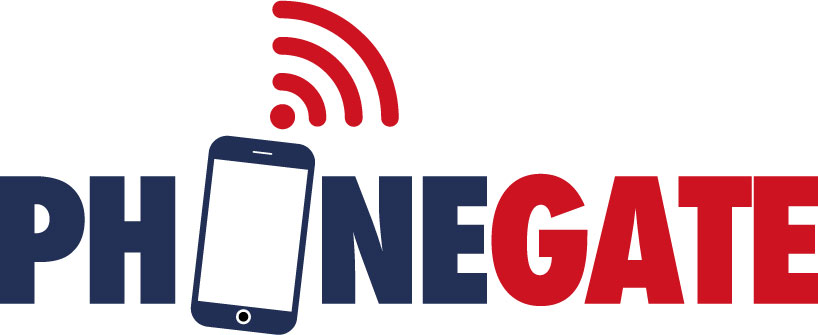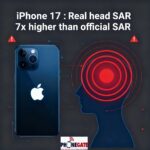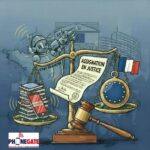For over twenty years, the World Health Organization (WHO) has been publishing monographs assessing the risk between radiofrequencies and cancer. This new monograph, the tenth of eleven planned, marks a notable break: whereas previous monographs concluded that the risk was limited or uncertain, this one points to more robust animal evidence and highlights worrying signals for public health.
In 2011, the IARC classified radiofrequencies as “possibly carcinogenic to humans” (Group 2B), on the basis of an increased risk of glioma in intensive users of cell phones. Since then, most monographs have downplayed the risks, despite the massive increase in worldwide exposure and the proliferation of scientific studies.
Enhanced animal evidence on several tumor types
Monograph 2025 is based on 52 animal studies, including 20 long-term bioassays, and concludes that there is a high level of evidence (“high certainty”) for an increase in certain cancers in male rats exposed to radiofrequencies:
- Cerebral gliomas: significant increase in male rats exposed to high SAR (Specific Absorption Rate) levels (up to 6 W/kg).
- Cardiac schwannomas: increased risk in male rats, with dose-response effects observed in two independent long-term studies.
- Hepatoblastomas and lung tumors: significant increase in male mice exposed to CDMA (3G)-modulated radiofrequencies.
Consult the full monograph: Effects of radiofrequency electromagnetic field exposure on cancer in laboratory animal studies, a systematic review (Mevissen et al., 2025, Environment International)
SAR and dosimetry: persistent methodological limitations
The monograph highlights that the Specific Absorption Rate (SAR), the main regulatory indicator of exposure to cell phones and connected objects, remains an imperfect measure for predicting long-term effects, particularly for non-thermal exposures. Uncertainty about the relevance of SAR for assessing actual risks is explicitly recognized, which weakens the scope of current health recommendations.
Extract: “The results of this systematic review provide high or moderate CoE for several cancer sites relevant to cancer hazard identification for humans. However, the type of exposure (whole body versus localized), intensity of exposure and duration of exposure must also be considered when translating the effect sizes to cancer risk in humans.”
Conflicts of interest: WHO’s scientific independence in question
Several authors of the WHO monographs declare links with organizations or groups (notably ICNIRP) historically close to the telecoms industry. This proximity – already denounced by the Karolinska Institute as early as 2008, and more recently by the Turin Court of Appeal in 2020 as a conflict of interest that must be systematically reported – has been ignored in the majority of previous monographs, and continues to provoke much justified criticism of the impartiality of the assessments.
The Italian ruling states:
“It is considered that less weight should be given to studies published by authors who have not declared conflicts of interest. In this case, situations of conflict of interest may arise in relation to the assessment of the effect of radiofrequencies on health, for example:
-
cases where the author of the study has advised the telephone industry or has received funding for studies from the telephone industry
-
if the author himself is a member of ICNIRP.”
A scope minimized by the composition of the expert panel?
Conflicts of interest declared by the authors of this monograph may have limited the scope of the conclusions and explained the report’s caution, despite animal evidence that is now difficult to ignore. Indeed, several of the monograph’s authors declare links with industry or industry-funded organizations: leading a research group with employees of a telecommunications company, government financial support, participation in advisory committees (including the industry-linked ETHz Swiss Research Foundation for Electricity and Mobile Communication (FSM), or consulting activities in cell phone safety.
Phonegate Alert calls for action
Following this new scientific evidence in animals, our NGO calls for:
- An immediate revision of exposure standards, based also on non-thermal effects and vulnerable populations (children, pregnant women).
- The exclusion of experts linked to ICNIRP or industry from evaluation panels.
- Official recognition of Phonegate – the overexposure of users due to biased SAR tests.
For Dr Marc Arazi, President of Phonegate Alert:
“This tenth WHO monograph marks a turning point, but its impact is limited by the persistence of conflicts of interest and an outdated dosimetric approach. As long as WHO continues to rely on industry-related experts, public health will remain insufficiently protected from the risks of radiofrequencies.”
Summary of this WHO monograph
- The 10th WHO monograph is based on solid animal evidence for several cancers, but the scope of its conclusions remains attenuated by the composition of the expert panel and the maintenance of the SAR paradigm.
- Previous monographs, which were mostly reassuring, failed to take into account the growing importance of recent studies and worrying epidemiological signals.
- Recurrent conflicts of interest among the authors raise questions about the true independence of international expertise, at a time when the question of dosimetry and SAR remains a weak point in health assessment.
Download the monograph: https://doi.org/10.1016/j.envint.2025.109482
On the same subject :






